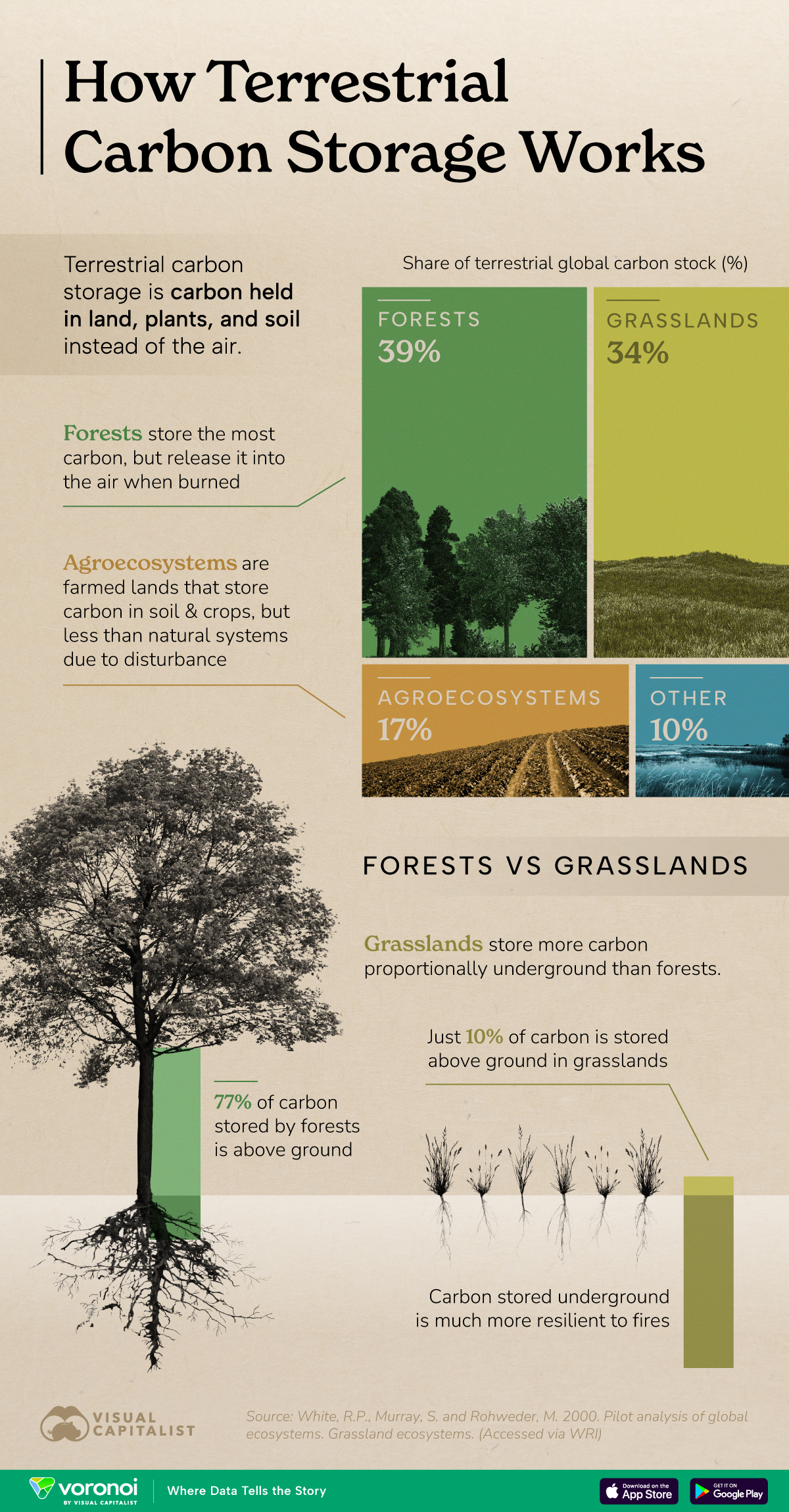![]()
See this visualization first on the Voronoi app.

Infographic: How Terrestrial Carbon Storage Works
This was originally posted on our Voronoi app. Download the app for free on iOS or Android and discover incredible data-driven charts from a variety of trusted sources.
Key Takeaways
- Forests store the largest amount of terrestrial carbon
- Grasslands also play a massive role in mitigating climate change
Terrestrial carbon storage is a vital part of the Earth’s natural climate defense system.
In this infographic, we show how different land ecosystems contribute to holding carbon stock. From forests to grasslands, nature plays a powerful role in regulating the planet’s carbon balance.
Data & Discussion
The data for this visualization comes from World Resources Institute. It breaks down the distribution of carbon stock across major land ecosystems.
| Ecosystem | Share of terrestrial global carbon stock (%) |
|---|---|
| Forests | 39 |
| Grasslands | 34 |
| Agroecosystems | 17 |
| Others | 10 |
Forests: Earth’s Carbon Giants
Forests hold 39% of all terrestrial carbon, making them the largest carbon sink on land. As of 2023, countries with the most forest area are Russia, Brazil, and Canada.
Trees absorb carbon dioxide from the atmosphere and lock it in their trunks, branches, and soil, a process which slows global warming and preserves biodiversity. As noted by the Food and Agriculture Organization, deforestation releases about 1.6 billion metric tons of carbon annually into the atmosphere.
The Underrated Role of Grasslands
Often overshadowed by forests, grasslands actually store 34% of terrestrial carbon. Unlike forests, they trap most of this carbon underground in deep root systems which makes them more resilient to fires and droughts. According to the Nature Conservancy, restoring grasslands is a powerful and cost-effective climate solution.
Agricultural Lands: Potential for More
Agroecosystems currently store 17% of terrestrial carbon, but they hold untapped potential. Practices like cover cropping, no-till farming, and agroforestry can significantly boost carbon sequestration. Research from the Natural Resource Ecology Laboratory shows that regenerative agriculture could double soil carbon levels in some regions.
Learn More on the Voronoi App ![]()
If you enjoyed today’s post, check out this graphic showing tropical forest loss in 2024 by country.